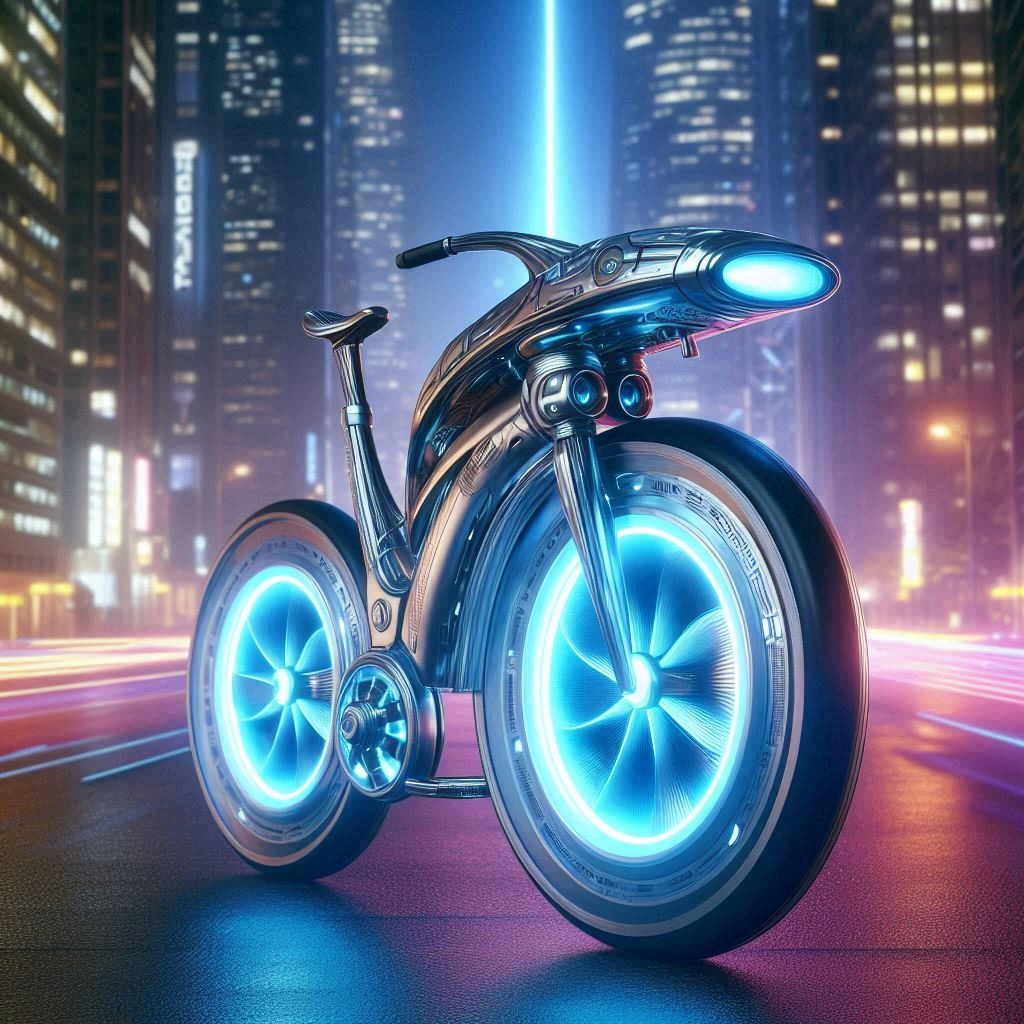
Back in the mid ‘90s when I started racing mountain bikes, it wasn’t uncommon to see a number of guys still lining up at races on fully rigid 26-inch bikes. Suspension forks had only been around for a few years and a good fork was considered the pinnacle of off-road technology.
Back then, full suspension bikes were a bit of an oddity, sort of a backwater of bike technology. There were a few out there but they tended to be heavy and more often than not, bouncy as pogo sticks. I can remember sitting around with friends after races debating whether full-suspension bikes would ever catch on or if they were just a passing fad for riders who weren’t skilled enough to ride a “real” mountain bike.
Then this showed up in my local shop and I couldn’t help myself.
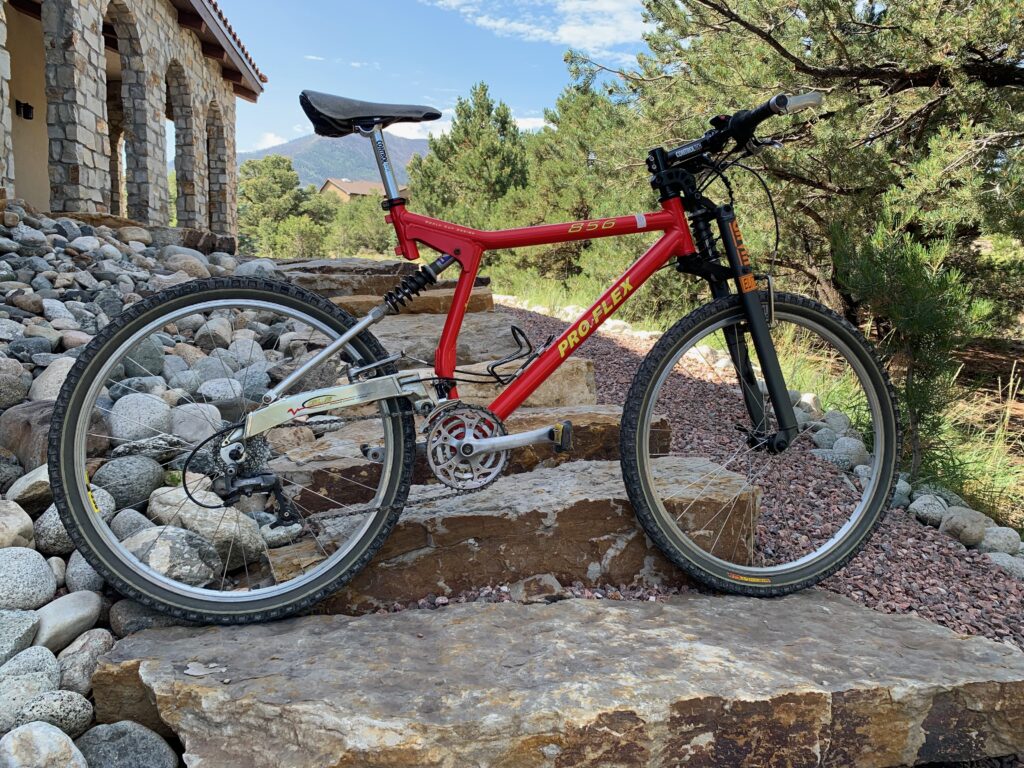
Hey, if it was good enough for Hank and Bobke, it was good enough for me!

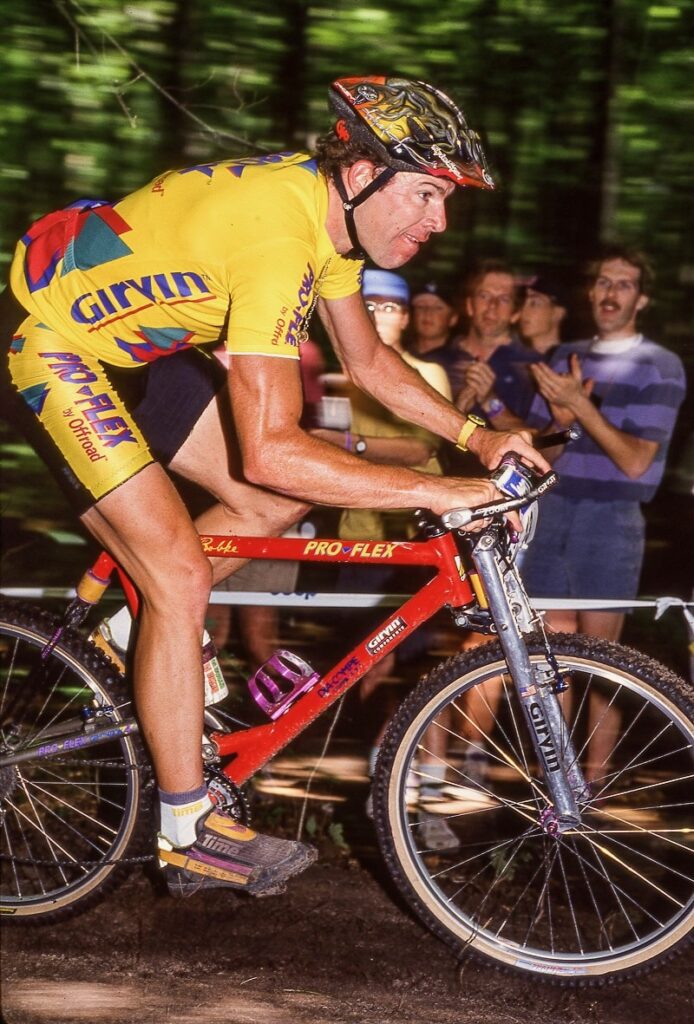
Around that same time, RockShox came out with their bright yellow Judy fork and it felt like the mountain bike technology arms race really took off.
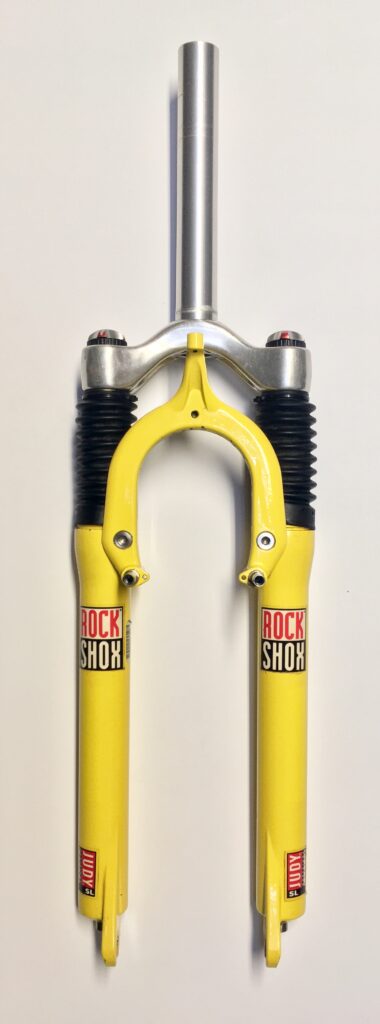
In the thirty plus years since then, we’ve seen the mountain bike evolve dramatically. Innovations like useable full suspension, 29-inch wheels, 1×12 drive trains, and carbon everything have made bikes lighter, more reliable and more efficient. The modern mountain bike looks like it’s from another planet compared to those bikes from the 90s.
My current ride, a Specialized S-Works Epic is an amazing piece of engineering. A 2018 model, it’s still lighter and more responsive than most 2024 bikes. Best bike I’ve ever ridden, and I’ve had the privilege to ride a few. In six years of racing and riding, I’ve happily thrashed the crap out of it. And while it still has plenty of life in it, what I’ve discovered is that for the rocky trails around here, the stock 100mm travel fork and rear suspension really isn’t enough.
The longer I’ve ridden the local trails, the more my technical skills have improved and the faster I’m able to go. For some trails, I’ve clearly reached the limit of the bike’s capability, not to mention my, ahem, “experienced” body’s tolerance for discomfort. High-speed descents can get sketchy and on longer rides I end up feeling like I went three rounds with Mike Tyson.
The obvious solution is to get a long-travel trail bike. That’s what you most commonly see on the trails around Salida. While today’s trail bikes are great machines, they really aren’t the style of ride I’m looking for. I come from a cross-country background and I’ve always favored uphill efficiency over downhill capability. The way I see it, I can finesse most downhills but there’s no finessing gravity.
Then recently, I noticed the crew over at Specialized has come out with the Epic 8, the latest generation of my current ride. A lightweight, cross-country bike with 120mm of travel. Come again? Same light weight with twenty percent more suspension? How can that be? All I know is it’s eerily close to exactly what I was looking for.
So after much consternation and some helpful nudging from Ms. Seeking, (I’m a lucky man) I took a deep breath and dropped coin for the Epic 8.
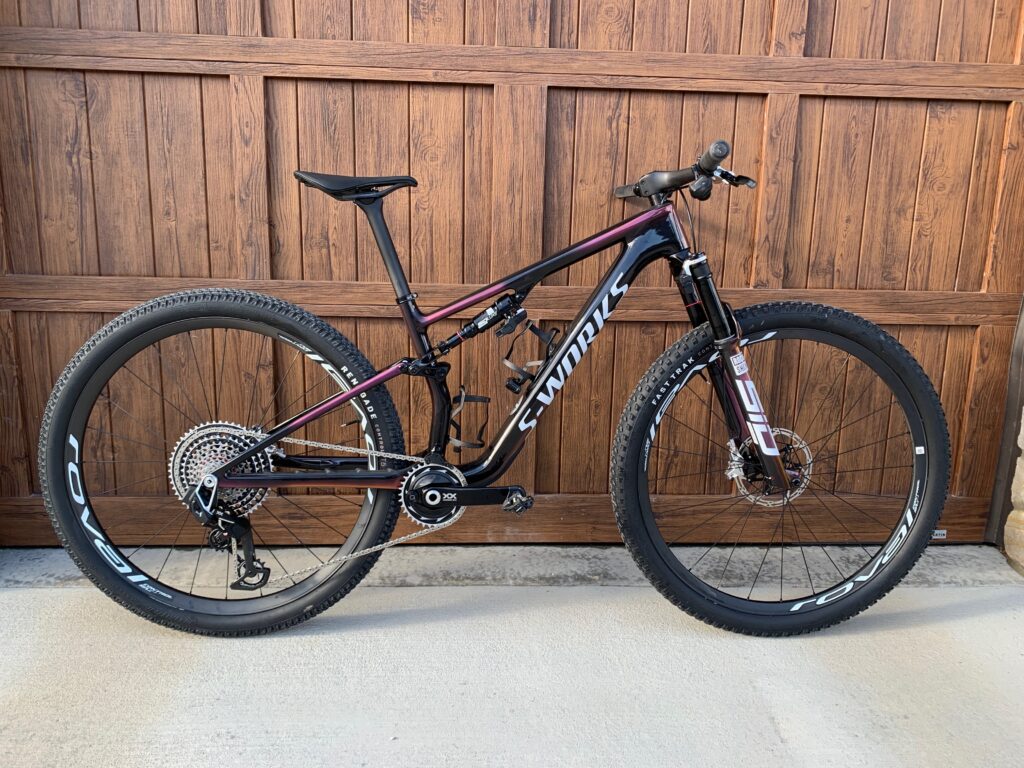
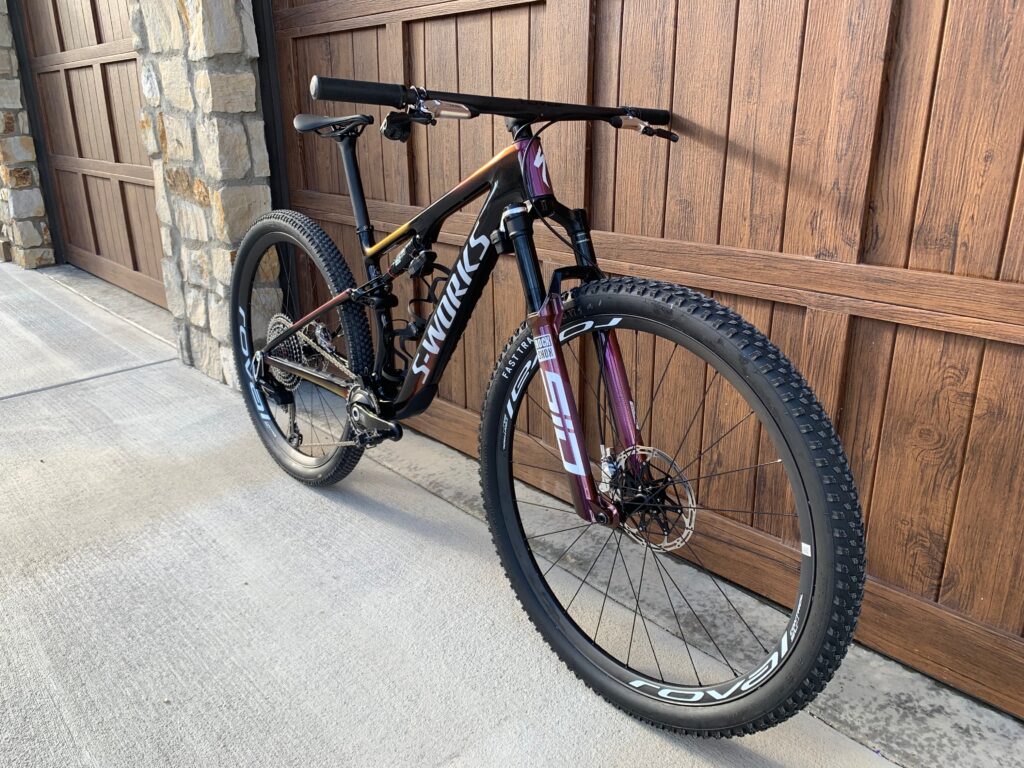
Being the flagship of the brand, in addition to 120mm of travel, the Epic 8 also comes dripping with the latest in bleeding-edge tech. After years of seeing innovations in bike technology, I know better than to say this or that is the peak or ultimate anything. But you know what? I think this bike may actually be it. I can’t think of anything else that can be done to improve it. Electronic wireless Bluetooth leg massagers maybe? This may truly be peak bicycle technology. The Starship Enterprise of bikes.
It has the latest Sram AXS wireless electronic shifting, for sure, but what’s really interesting is the suspension. The Epic 8 comes with Sram’s electronic RockShox Flight Attendant front and rear. The suspension works with the Quarq power meter to adjust the bike’s ride on the fly without any manual input from the rider. When the cranks sense you’re pedaling hard, the suspension firms up to give you more efficient pedaling and less bob. Stand to sprint and it locks out. When you’re flying downhill and the suspension is taking big hits from the trail, the fork and the rear shock soften up to smooth the ride.
They say the system learns your riding style and automatically adjusts to make the bike the best it can be for the individual rider. And it’s all wireless. The components “talk” to each other and to a SRAM app on your phone via Bluetooth. It’s both intriguing and a little unnerving.
Now to me, some of the technology feels like the engineers at Specialized may have jumped the shark. I mean, the bike has nine separate components powered by nine separate batteries. There are four rechargeable batteries for major items like the derailleur, front fork, rear shock, and dropper post. In a brilliant bit of engineering foresight, all four are identical and interchangeable so if, for example, you’re out on the trail and your derailleur dies, you can swap out with the seat post battery.
There are also five smaller batteries for the power meter, shift pods and tire pressure sensors. That’s right, the Epic 8 has electronic Bluetooth tire pressure sensors.
All in all, it’s an amazing combination of high-end carbon manufacturing and the latest in electronic bike wizardry.
Flight Attendant shocks.
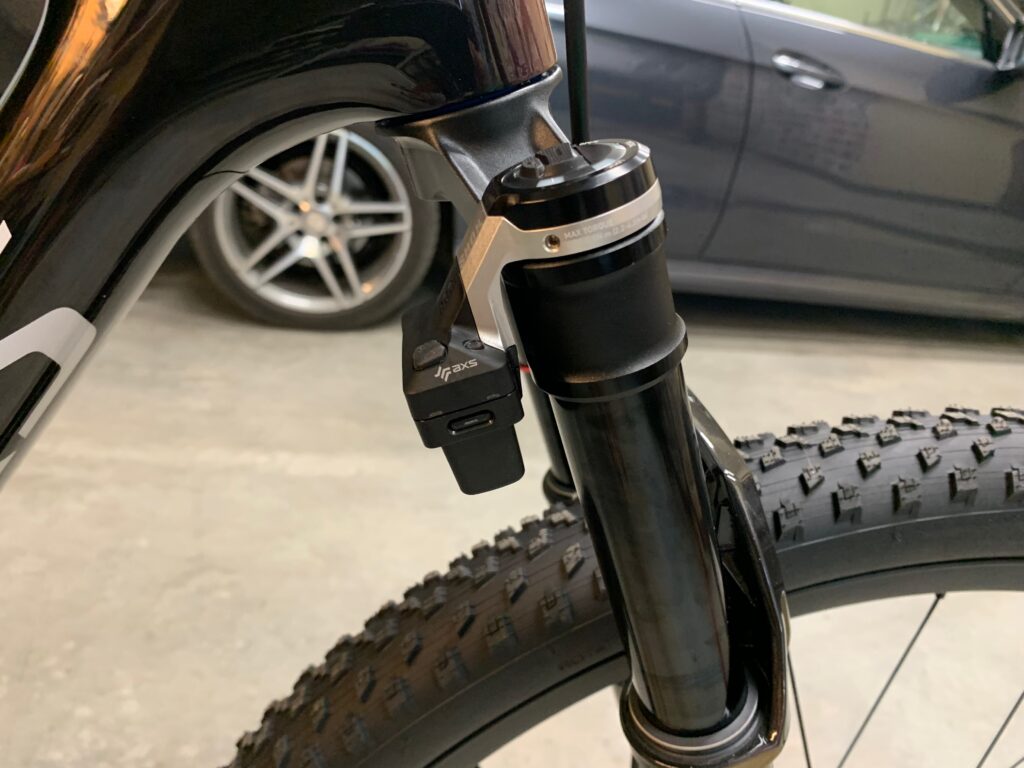
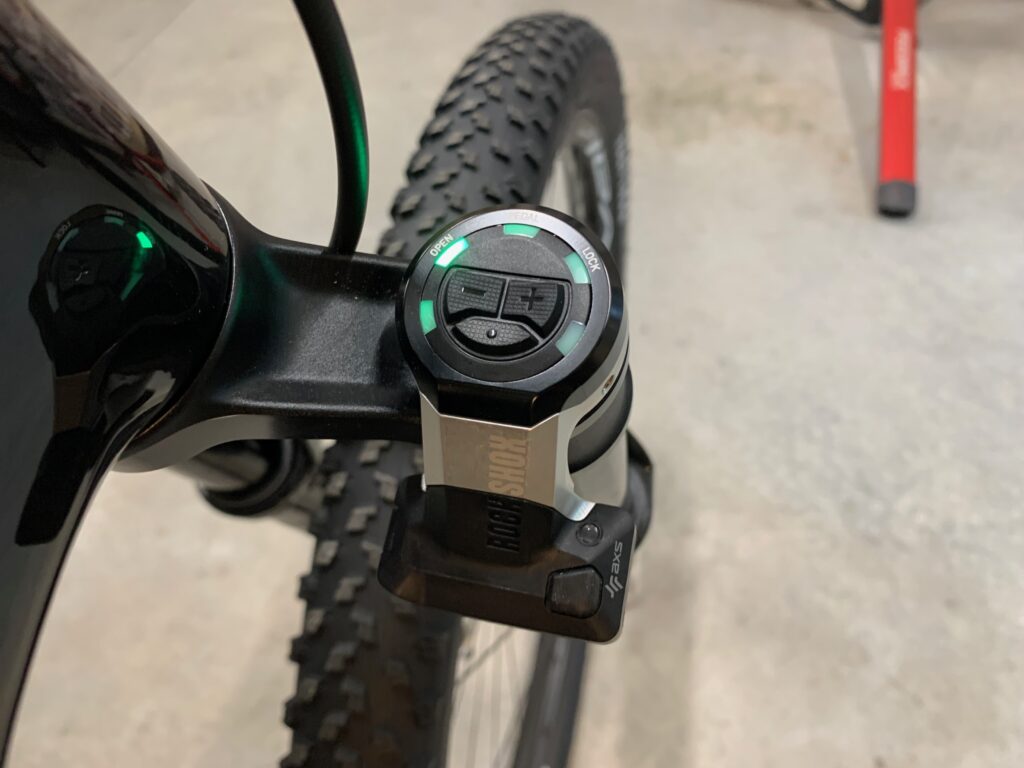
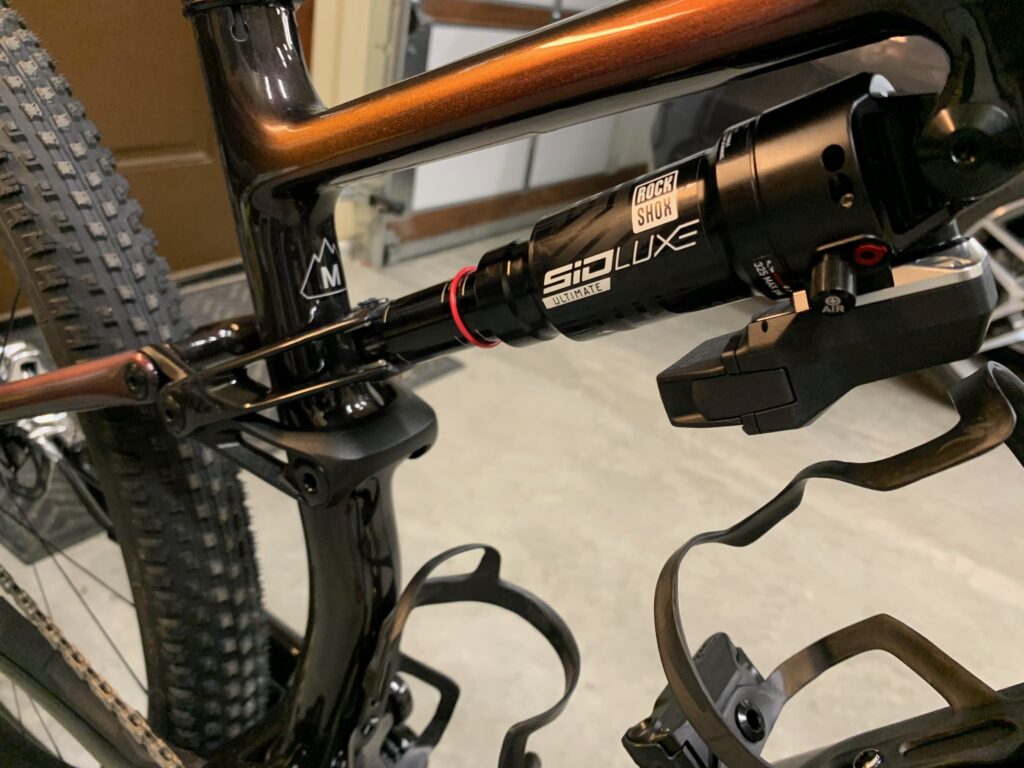
Quarq power meter.
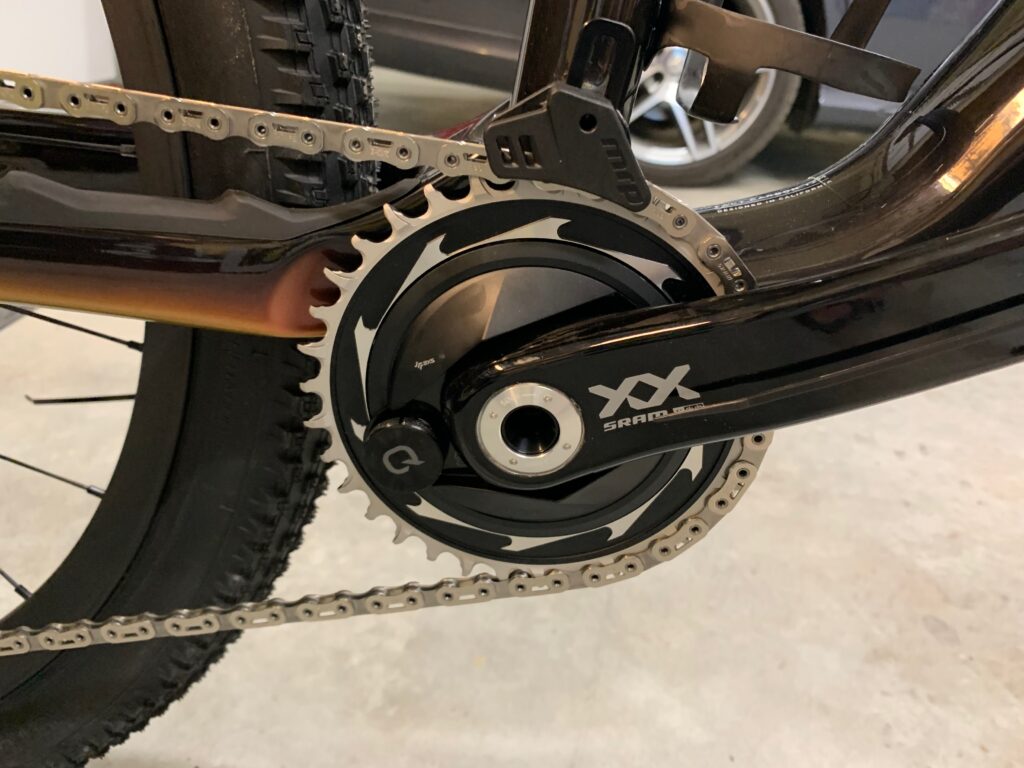
Look ma, no derailleur hanger!
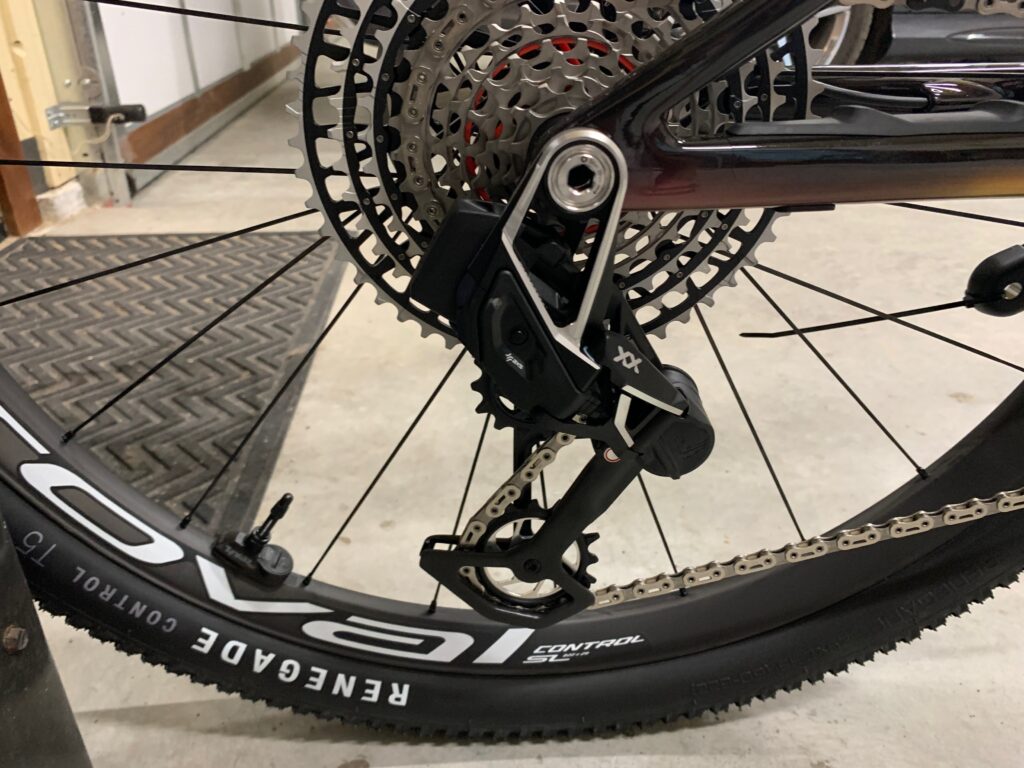
My current bike has a 34 tooth chainring paired with a 10×50 cassette. The new bike has added two more teeth to each of the top three cogs for an even wider 10×52 gear range. And check out that flat-topped chain. Not sure what it does but it sure looks cool.
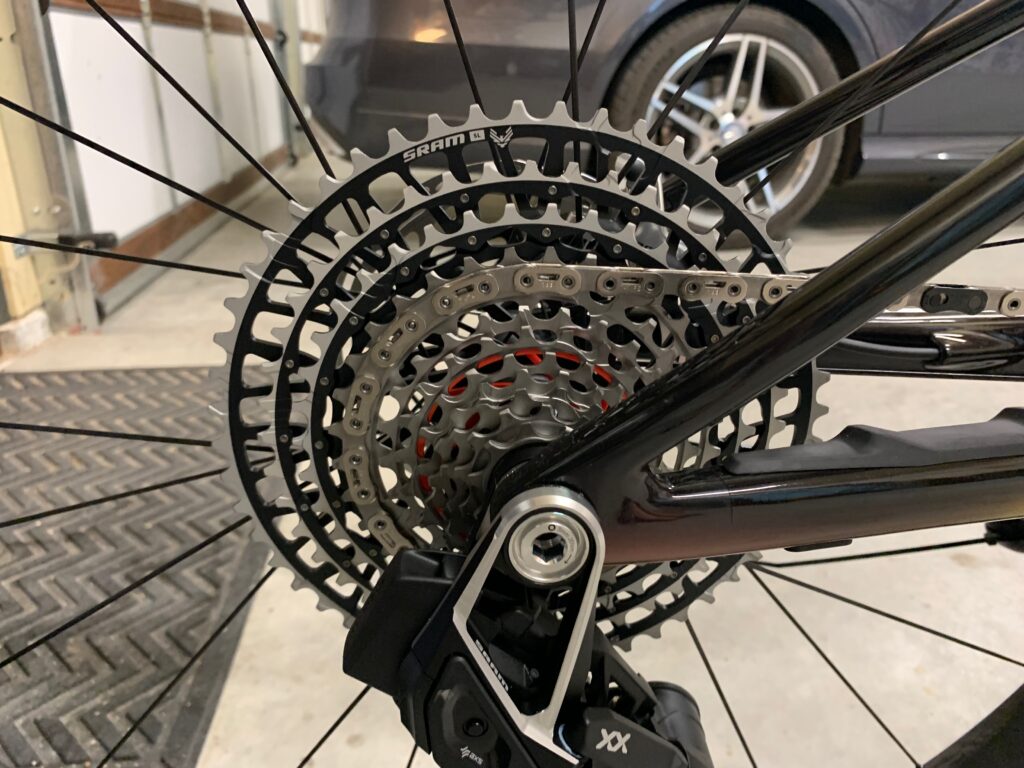
The downtube has been enlarged to cricket bat dimensions. The reason? Integrated storage cubby. Nice!
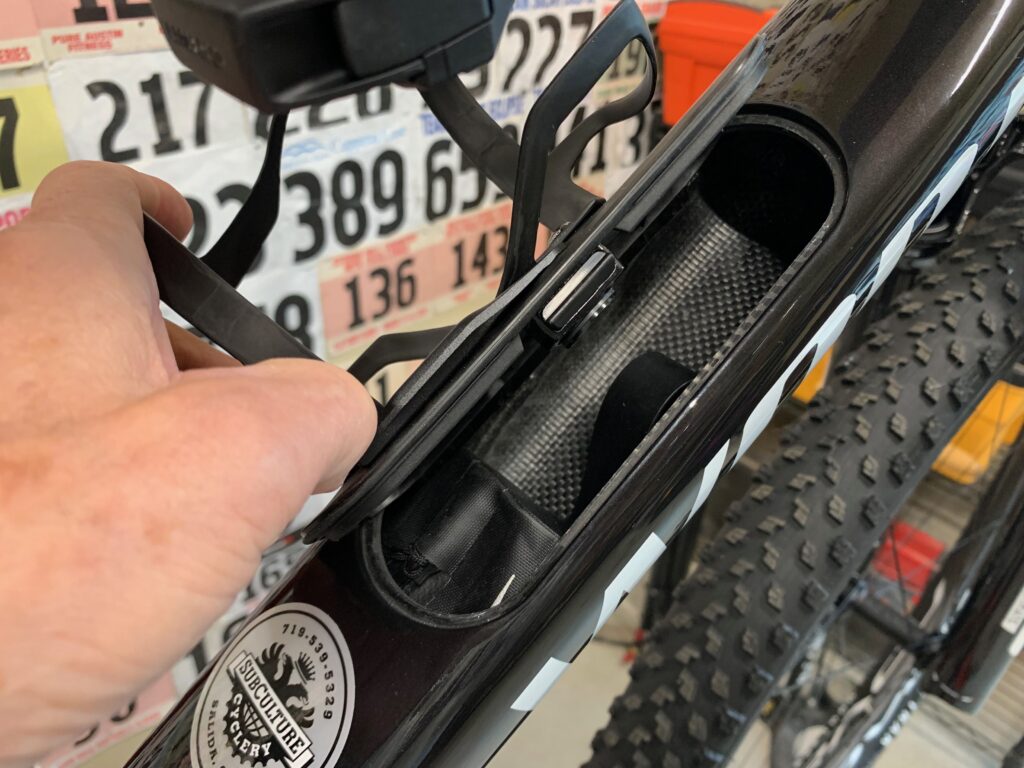
The sleek integrated handlebar/stem.
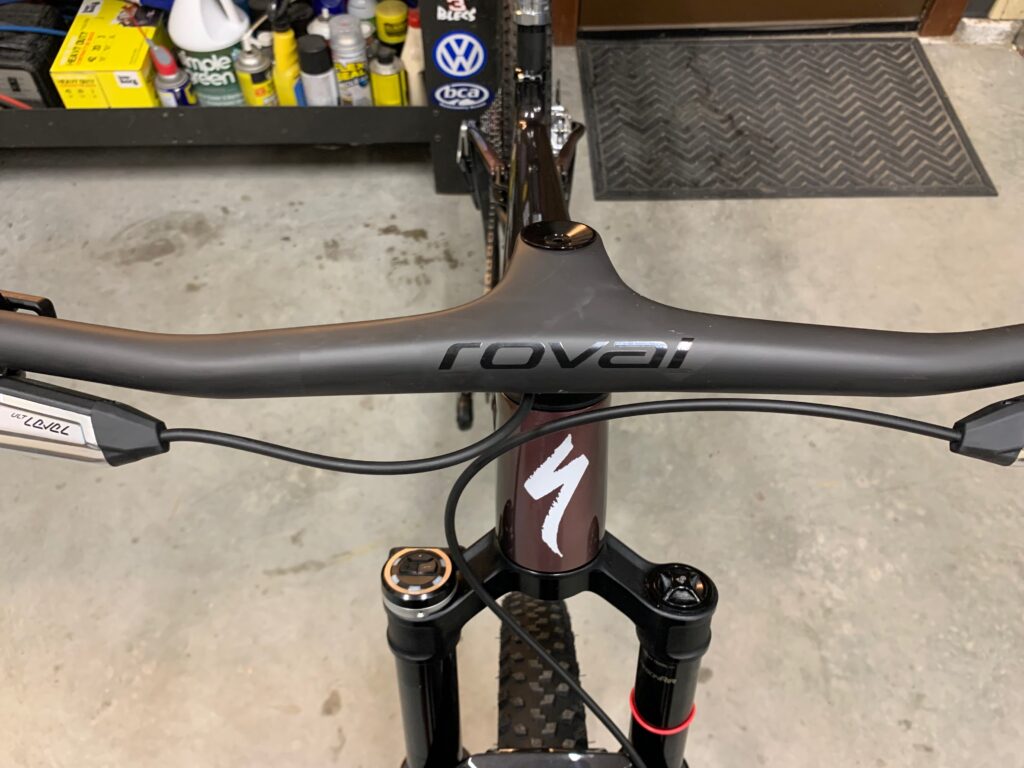
And it still has room for two bottles! A seemingly minor thing, it’s actually a huge practical advantage over other full suspension designs.
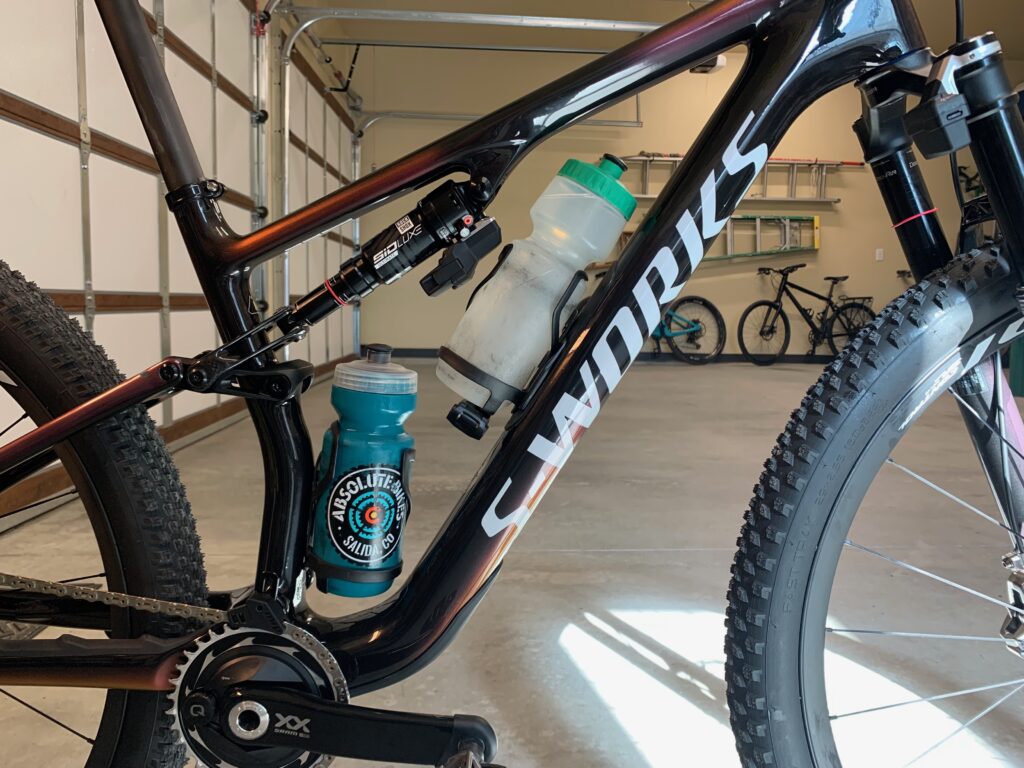
It’s a lot and frankly, a little overwhelming. So, to save weight and simplify the bike more to my Luddite sensibilities, I ended up swapping out some of what I consider the unnecessary and/or ridiculous items with more conventional components. In doing so, I eliminated four of those nine batteries and dropped over a pound in weight.
Starting with those tire pressure sensors. As anyone who has spent any time riding mountain bikes knows, there’s no such thing as correct tire pressure. It varies depending on the rider, the trail, the conditions, even the mood. And besides, the last time I checked, my floor pump has a pressure gauge. I don’t need an extra electronic doohickey adding weight and complicating trail-side flat fixes just for a second opinion.
Original
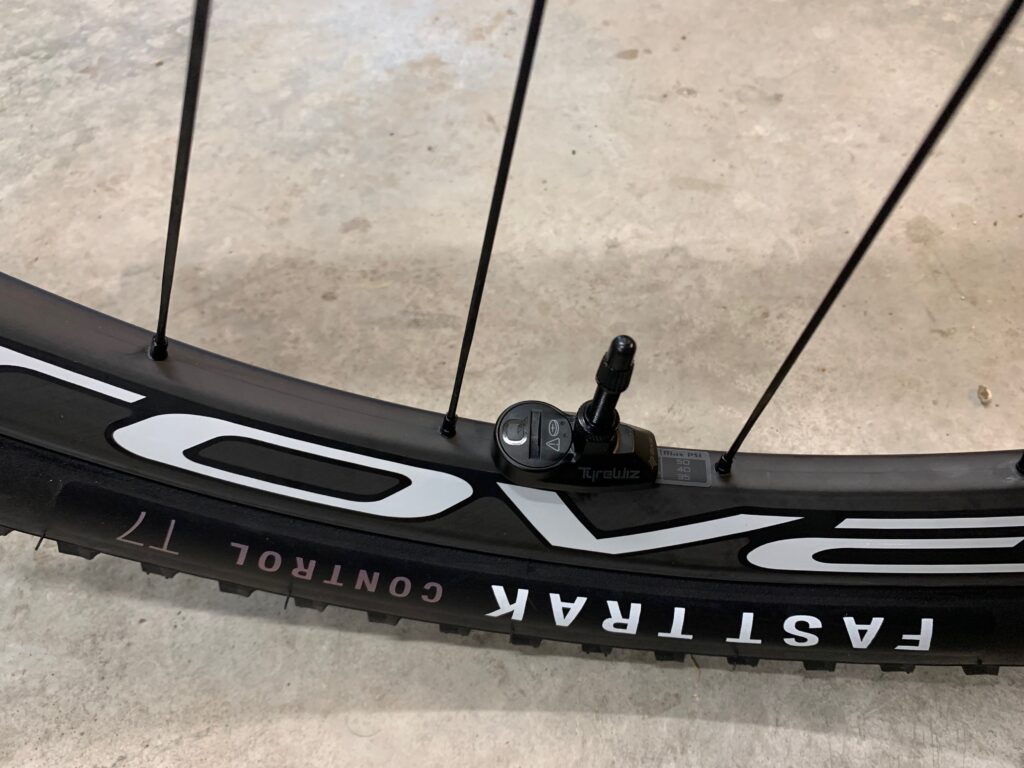
Fixed
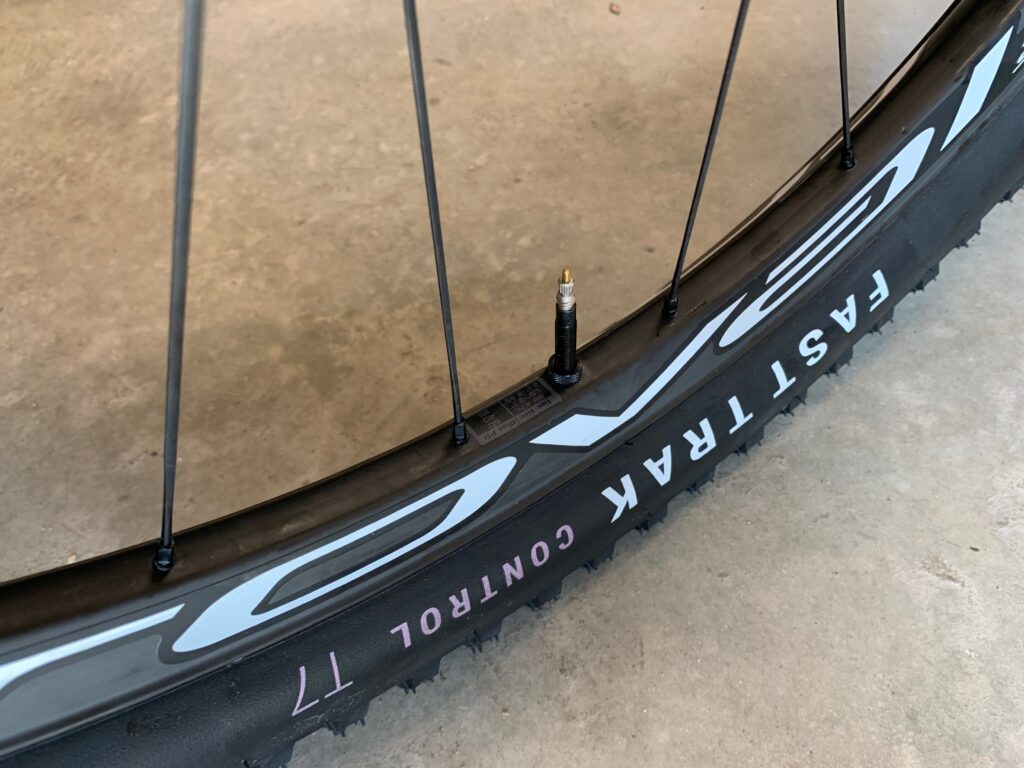
I know I’m going to sound like a retro-grouch on this one, because I know plenty of people that love them, but in my opinion dropper posts have no business on cross country bikes. I raced for 24 years and never once did I think, gee if only I could drop my seat I could go faster. I’m not doing ten-foot drop jumps and I don’t think most people who buy these bikes are either.
To me, dropper posts feel like an up-sell tactic by the bike industry. A way to get you to pay for something you don’t really need. Sram eliminated the front derailleur years ago so the left side of the handlebar was just sitting there empty. Better come up with something else to get people to pay for. You really should consider getting some undercoat rust proofing too.
Dropper post on a downhill bike? Absolutely. On a trail bike? Maybe. A cross-country bike? No.
Original
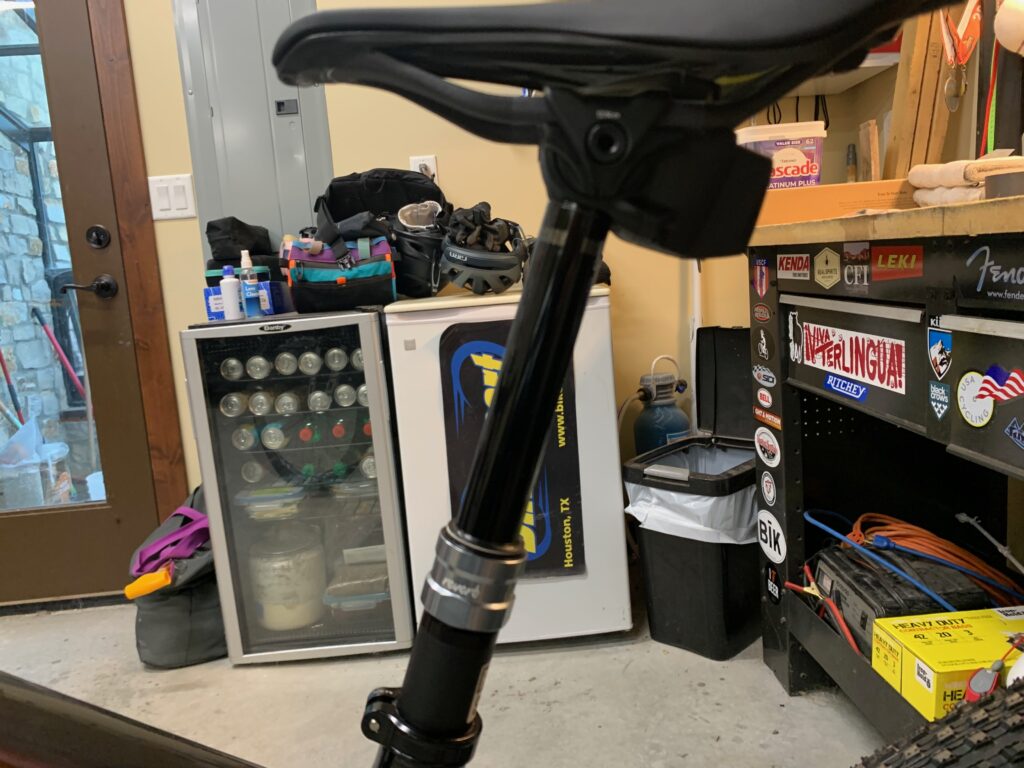
Simplified
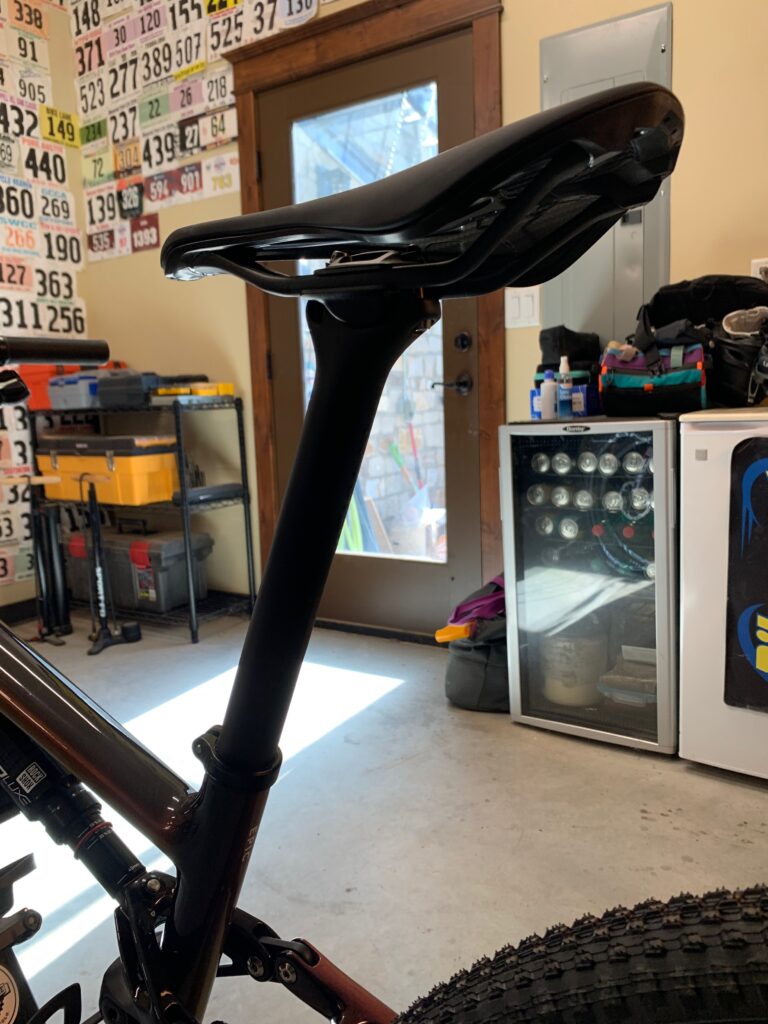
It’s all very impressive, but the real test is how it rides. First off, the 120mm of travel is a noticeable improvement over my old bike. I’ve taken it over trails where my 100mm fork routinely bottoms out once or twice and the new fork never used more than three quarters of its travel. Best of all, it did it without feeling harsh or rattly on smaller bumps. A truly confidence-inspiring ride.
The electronic shifting is quick and effortless, most notably on downshifts. Downshifts and upshifts now feel the same. No more long pulls on the lever to get the chain to climb into a lower gear. Just a quick click of a button regardless of which direction you’re going on the cassette.
On its initial ride, the first word that came to mind is “solid”. Like a flat-barred carbon road bike. It feels light and stiff and the first time I sat on it I thought this could really suck on a rocky trail. Then I hit the first few bumps, the suspension opened up and I just sort of silently floated over them. Spooky good.
And what’s interesting is the suspension makes a low buzzy chirp as it switches between modes. At first, I thought the brakes were rubbing but once I realized what was going on, I grew to like the sound. A signal that my suspension is working as hard as I am.
Best of all, like all good technology, once you get used to it, it just sort of disappears underneath you. The first couple of rides I about ran off the trail watching the little blinky lights on top of the fork. But once I got over that and just rode, the bike became an extension of myself, like any other good bike, only better.
So, it looks like I’ve officially entered the future. In a way it feels like we may have lost something. I ride bikes to escape technology; I don’t want to bring it along with me. I certainly don’t want an app to operate it. But once the Epic 8 is set up and you throw your leg over it and start riding, you forget about all the technology and just enjoy the truly remarkable ride. Damn you Sram for making such good stuff!
Granted, I now have to remember to periodically charge my derailleur. But even the Starship Enterprise needs its dilithium crystals.
Life is short. Ride nice bikes.